SBC Energy Institute Climate Factbook
Posted on 19 November 2015 by Glenn Tamblyn
A new Fact Book covering the basics of understanding of Climate Change has just been released by the SBC Energy Institute.
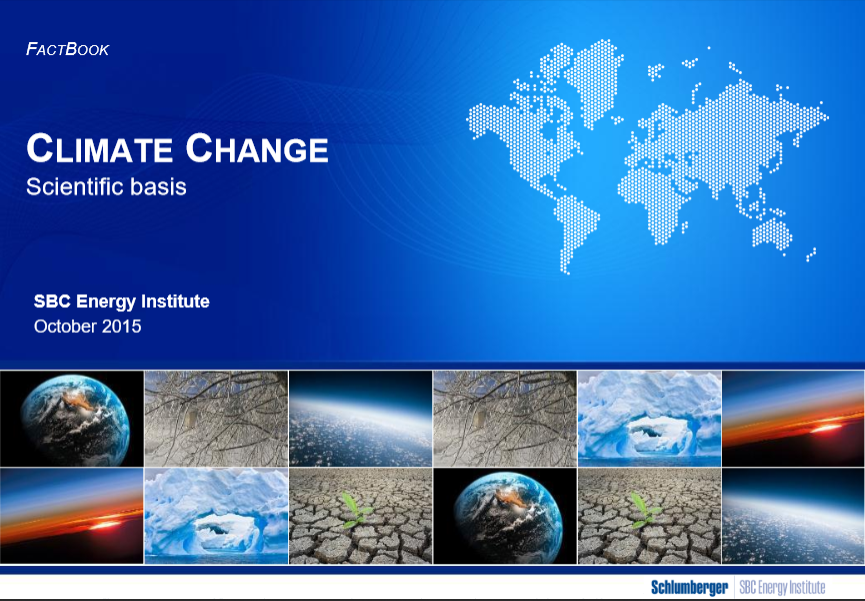
The FactBook is 75 pages long, and gives a good coverage of the basics of the science of Climate Change, impacts, mitigation and adaptation. Referencing the scientific literature and drawing significantly on the work of the IPCC, it discusses some of the uncertainties in the science and provides a good understanding of why, on the balance of the evidence - including the uncertainties - we need to be acting to restrict our carbon emissions.
The FactBook looks at basic climate balance,
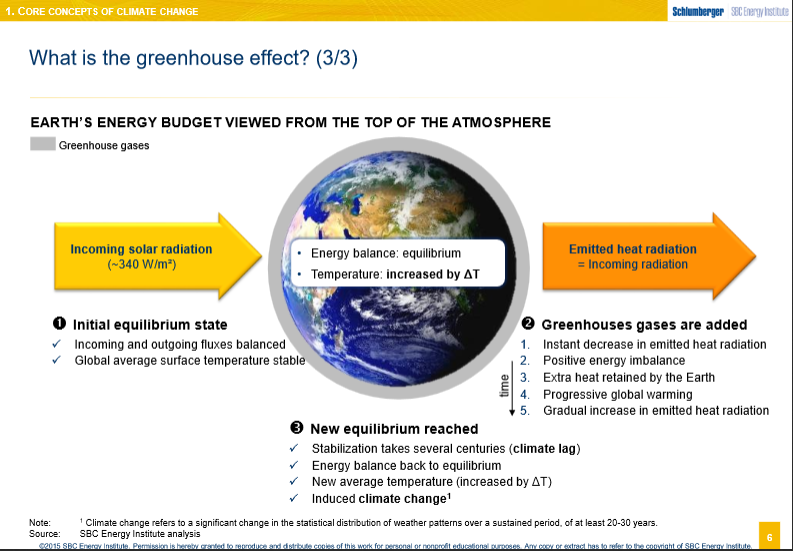
past climate,
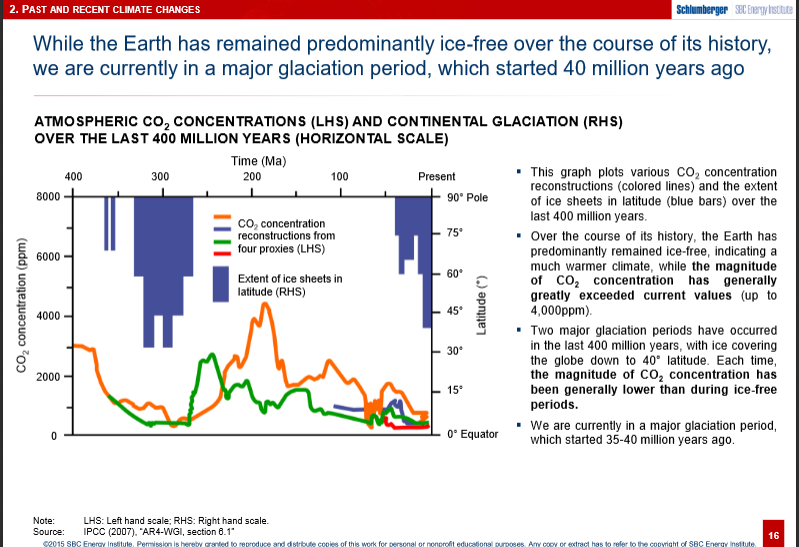
modern observations,
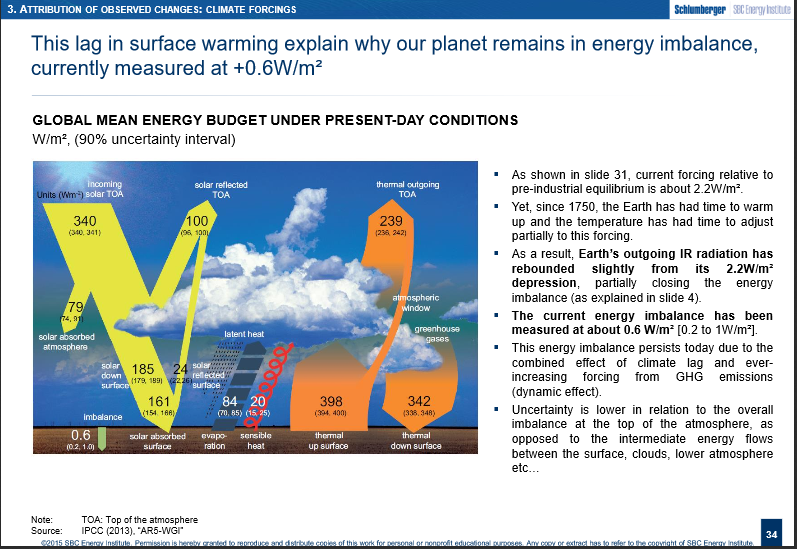
as well as impacts and the actions needed to reduce them.
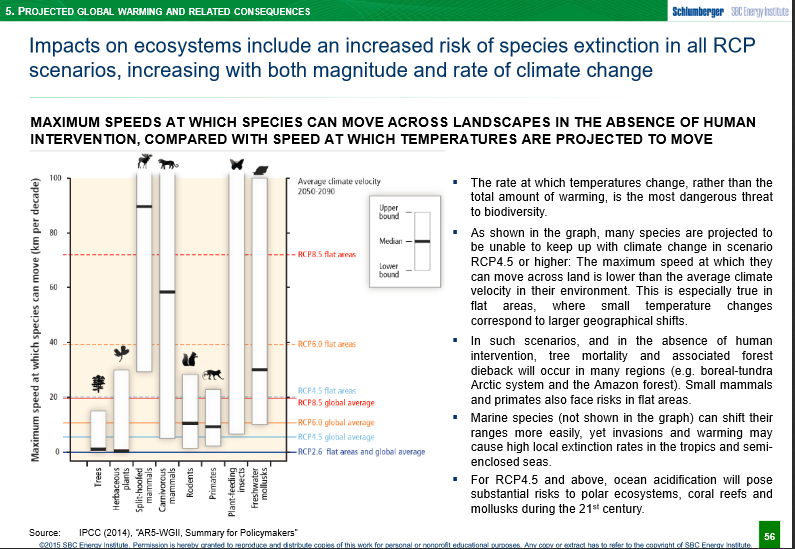
The content of the book was reviewed by Dr. Michael MacCracken, Chief Scientist for Climate Change Programs, Climate Institute, Washington DC and he has added comments at the end of the report.
Including: "While uncertainties remain, the changes in atmospheric composition projected for the 21st century have in the past caused warming of several degrees Celsius and been periods with much smaller ice sheets and much higher sea level. If there is a model bias, it is that current models, which do not yet include some of the slower-acting processes, underestimate rather than overestimate climate sensitivity. Global warming just cannot be summarily dismissed." (my emphasis).
Indeed.
The language is modestly technical but far more readable for a general audience than the scientific literature itself. The book is organized as individual slides, suitable for using as a presentation in a seminar, or in a blog post or video.
The FactBook is copyright free and can be freely quoted from. It can be downloaded from here. (5.27 MB, pdf). The SBC Energy Institute are hoping to distribute this report to as wide an audience as possible in the lead-up to the COP21 conference in Paris in December.
So feel free to pass this on to friends and colleagues.
The SBC Energy Institute is a not-for-profit research organization based in the Netherlands. It's research covers all areas of the energy industry, both fossil fuels and renewables, hydrogen fuels, and energy storage. It was established by Schlumberger Business Consulting, which in turn was the management consulting arm of Schlumberger, one of the worlds major energy sector services companies, particularly in Oil and Gas field technologies. SBC was recently acquired by Accenture, a large management consulting and services firm.
Help us do science! we’ve teamed up with researcher Paige Brown Jarreau to create a survey of Skeptical Science readers. By participating, you’ll be helping me improve SkS and contributing to SCIENCE on blog readership. You will also get FREE science art from Paige's Photography for participating, as well as a chance to win a t-shirt and other perks! It should only take 10-15 minutes to complete. You can find the survey here: http://bit.ly/mysciblogreaders. For completing the survey, readers will be entered into a drawing for a $50.00 Amazon gift card, as well as for other prizes (i.e. t-shirts).































 Arguments
Arguments






























Looks pretty good but on page 8 they say
"90% of the upwardly directed LWR is
absorbed by GHGs and radiated back
downwards, ...."
90% of up LWR is absorbed but then radiated in ALL directions!
Is it too late to get this corrected? Don't want to give the denialists anything to pick at.
enSKog @1, the claim on page 8 is not so much wrong as oversimplified. As shown in this image from Wild et al (2012), the net effect of reradiation is that there is a 342 W/m^2 back radiation, so that back radiation is 86% of upward IR radiation at the surface:
More importantly, IMO, only 239 W/m^2 escapes to space, so that the Outgoing Longwave Radiation is only 60% of the upward IR radiation at the surface. The difference between the two (158 W/m^2) is the "Total Greenhouse Effect". The difference between the upward IR radiation at the surface and the total IR radiation from the atmosphere (ie, 239+342-397 = 184 W/m^2) is made up for by other energy inputs into the atmosphere, specifically 79 W/m^2 of absorbed solar radiation, 85 W/m^2 from evaporation (including the release of H2O associated with photosynthesis, ie, transpiration), and 20 W/m^2 associated with convection (sensible heat).
As a side note, the same diagram is uses by the IPCC AR5 as Fig 2-8 except that upward IR radiation is given as 398 W/m^2 and evapo/transporation is given as 84 W/m^2 with no other changes, except related changes to bracketed figures, ie, the uncertainty ranges.
If we take a more detailed look, we note that energy absorbed by a single molecule (from any source) and then emitted as radiation has an equal chance of being emitted in any direction. This is sometimes glossed as "LWR is absorbed but then radiated in ALL directions", but of course individual molecules emit single photons on reradiation, each of which must have a specific direction.
It might be supposed that this must result in a collection of molecules radiating equally in all directions, but again this is not true. If we consider a parcel of air defined by vertical planes perpendicular to the surface with top and bottom boundaries defined by concentric shells around the Earth's center, then the air in the top of the parcel will be thinner and (in the troposphere) cooler than that in the bottom of the parcel of air. As the parcel of air has measurable thickness, some of the IR radiation from the air at the bottom of the parcel going upward will be reabsorbed by air in the parcel above it, and vice versa. Because of the difference in temperature, the air in the upper portion of the parcel will reradiate at a slower rate than that in the lower portion, with the net effect that the upward radiation from the parcel will be less than the downward radiation from the parcel. This difference is the core reason why the greenhouse effect exists.
The point is that the booklet's claim and your gloss both represent simplifications of a more complex process. Both can be made true by appropriate qualification and or change in wording, but only by adding significant complexity. The same is also true to a lesser extent of my explanation above. In any teaching situation, you have to make these tradoffs between absolute accuracy and keeping things simple enough for people new to the subject to understand the concepts. Unfortunately, those same tradeoffs result in potential misunderstandings, which are often exploited by deniers to spread confusion and doubt. (For your gloss, the confusion is that outgoing LWR must equal the downard IR radiation at the surface - something I have seen argued by deniers.) So, while I would have preferred to see an explanation of the importance of the temperature gradient in the atmosphere to the greenhouse effect, and the use of the word "net" on the page you discuss, overall the booklet is very good and the "errors" are only those of approximation needed to keep things simple in a teaching context.